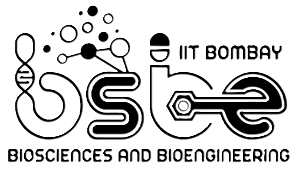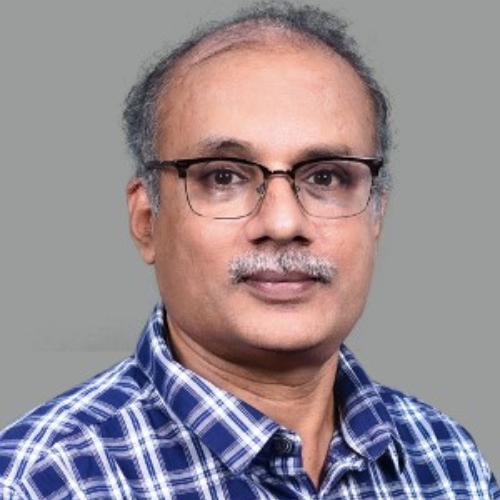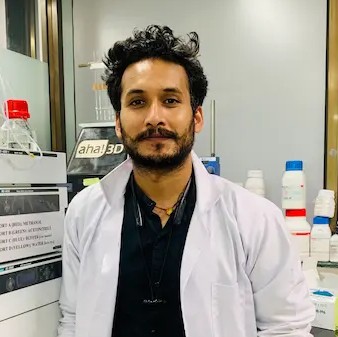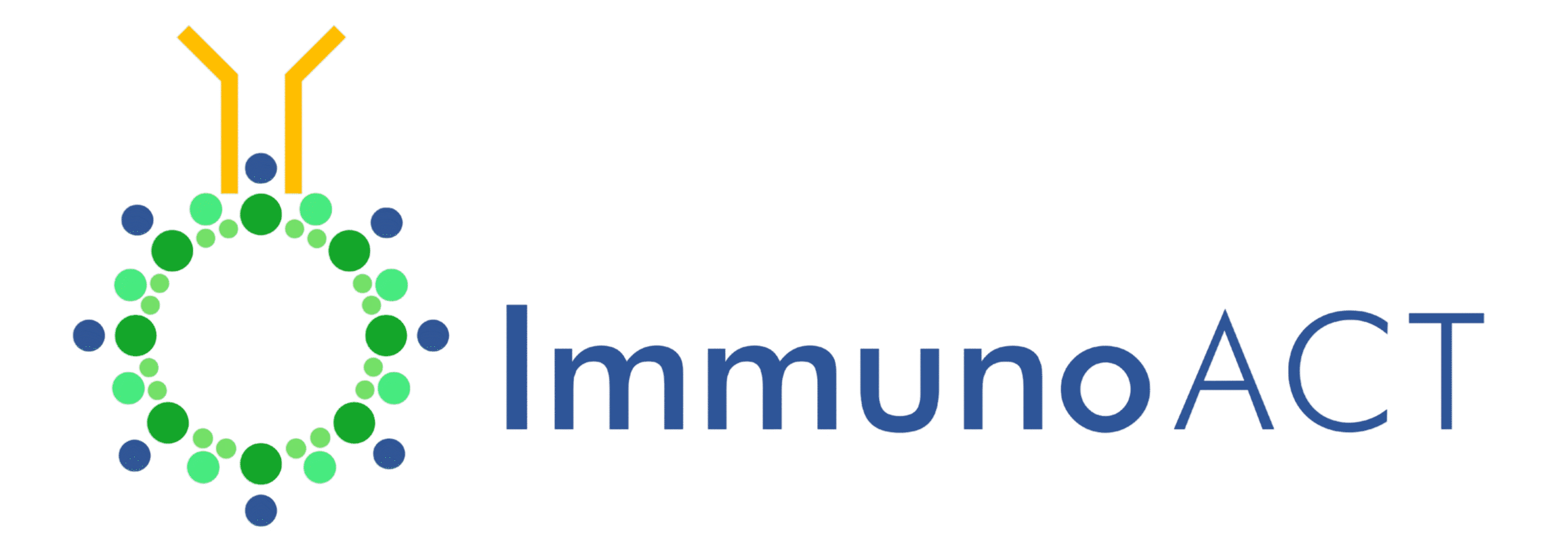
BSBE Newsletter


From the Editorial Team
The goal of this newsletter is to foster a stronger connection between current students, faculty, alumni, and industry partners, showcasing the innovative research and remarkable achievements within the department.
We hope to hear back from all of you and include you in upcoming issues, so ... do stay connected!
------------------
Anjali Raghunathan
Swati Patankar
Debjani Paul

BSBE at a Glance

Faculty Focus: Prof. Petety Balaji
From roots to reach: Prof. Petety Balaji on the evolution of BSBE
Known widely for his work in glycobiology, Prof. Balaji heads the Glycobiology Lab at the department. His journey into glycobiology began during his PhD and matured during his postdoctoral years. Since then, his current research has evolved in new directions.“I entered this field nearly three decades ago,” he reflects, “and a lot has changed—both in terms of scientific relevance and feasibility.” When he pursued his PhD at IISc Bangalore, it was almost a rite of passage for Indian researchers to move to the United States for their postdoctoral training. Prof. Balaji, however, always envisioned a return to India. “I never felt a sense of belonging in the US. I preferred facing the challenges here rather than enjoying the convenience there.”
He recalls telling an anecdote two years after returning to India, he tried to buy a microwave but could not find one in local shops. “Back then, people even brought electric sockets from the US. But that is no longer the case today, the gap in access to resources and research infrastructure has significantly narrowed.”
Prof. Balaji has been a witness—and a contributor—to the transformation of BSBE from a modest Biotechnology Centre into a full-fledged department. “When I joined, we were in survival mode. The centre had just five core faculty members and about twenty associate faculty drawn from departments like chemical engineering, chemistry, and physics. We were a small group, fighting for our independence”.
In 2001, the centre became a School after merging Biomedical Engineering and Biotechnology—though the latter initially resisted. “The biotechnology group wanted to remain independent,” he explains, “but the merger went through, and by 2009, we became a full department.”
“Earlier, biology did not have a real place here. It took a visit by the then IIT Bombay Director to Stanford University, where he saw a thriving biology program, to finally convince the Institute of its value.”
Today, BSBE is no longer fighting for its existence. “We’re past the existential crisis,” Prof. Balaji states. “In fact, biology has become indispensable. Our department has research diversity, strong interdepartmental collaborations—with chemical, physics, aerospace, civil and electrical engineering—and a growing focus on applied science.”
On his recent tenure as Head of Department, Prof. Balaji is characteristically humble. “I did not have any grand goals. BSBE is a ‘steady state’ department—most systems run smoothly. My job was just to make sure things happened on time.” He credits the faculty members for their cooperation and support and adds, with a smile, that he never lost sleep over departmental issues.
“I knew I could call on experienced colleagues if needed. I will not miss the headship.” While Prof. Balaji may not miss the headship, the department certainly misses his leadership.

Faculty Focus: Prof. Deepak Agrawal
Advancing biomedical research: Prof. Deepak Agrawal’s journey
Prof. Deepak Agrawal joined the department at IIT Bombay in January 2024, with a passion for translational research in the biomedical field. Prior to this, he served as an Assistant Professor at the Center for Biomedical Engineering, IIT Delhi, from October 2021.Prof. Agrawal’s move to IIT Bombay was a blend of professional growth and personal reasons. "My family was in Mumbai, and IIT Bombay offered a great opportunity to expand my research in a vibrant academic environment," he shares, highlighting how his goals and personal life align.
Since arriving, he has been impressed by how quickly things progress at IIT Bombay. He notes that the research atmosphere is very energetic, and forming collaborations and gaining support can happen quickly. He especially finds the department welcoming because of its cooperative nature. This positive environment has helped him build a team of researchers, including postdoctoral fellows, PhD, MTech, MSc students, and interns, all working together.
He also finds teaching rewarding. "The students are motivated and some are eager to deeply engage with their subjects," he enthuses. Additionally, he appreciates the smooth administration at IIT Bombay, which allows him to focus more on research and mentoring students.
His research focuses on creating solutions that can improve healthcare delivery in India. He is working to improve ventilator management in intensive care units and developing non-invasive methods to assess lung health - both crucial in the post-COVID era.
He is also studying the causes and development of chronic diseases like diabetes and fatty liver, which are increasingly linked to modern diets. As he points out, "People often think only alcohol damages the liver, but nowadays, processed foods and common diets can also cause fatty liver," highlighting an important but often overlooked health risk. He believes that healthcare data analysis can lead to personalized care, early detection, and prevention of diseases.
With a background in electronics and computational medicine, Prof. Agrawal demonstrates how diverse skills can come together to create effective solutions. He believes India’s healthcare system is adaptable and flexible, giving it an edge over the US and the UK. His long-term goal is to develop simple, affordable tools to improve patient care and healthcare delivery across the country.

Student Spotlight: Rajeshkumar Gop
The dedicated dynamo: Rajeshkumar Gop, Department General Secretary
In the bustling corridors of the Department of Biosciences and Bioengineering (BSBE) at IIT Bombay, few names echo as warmly as Rajeshkumar of the student body — former Department General Secretary and a PhD scholar in Prof. Dulal Panda’s lab. When we sat down to talk, he was in high spirits — his research paper had just been accepted which is a perfect snapshot of his ability to excel both academically and administratively.Rajesh began at BSBE as an MSc student and transitioned into a PhD in 2020. The lab alumni being placed in many different career paths gave Rajesh a lot of confidence in his choice of lab. Knowing the importance of alumni he notes, “An increasingly active alumni network creates valuable career opportunities for BSBE graduates.”
Rajesh’s leadership journey began as an MSc representative and was shaped by his natural inclination to help others. He considered applying for the position of Institute General Secretary, but chose to focus on his own department.
From increasing Merit-cum-Means scholarship access to supporting students struggling with language barriers, Rajesh has made a difference to the academic life of many students.
“There were students who only spoke Hindi and could not follow classes taught in English. I connected them with the Language Resource & Writing Center (LWRC) and helped them continue”. He also recalls another critical incident. Rajesh helped a PwD student with haemophilia receive urgent medical attention by swiftly navigating the institute’s hierarchy.
“Knowing the system and whom to contact is half the battle. I’m glad I was in a position to help.” He has also improved student handbooks and helped unite MSc and MTech students. His efforts earned him the Best General Secretary Award.
How does he manage lab work and leadership? A disciplined routine. “I wake up at 6 am, do some exercise, finish my TA duties early, and work on my experiments during the day. Meetings and council work often go on till midnight” A former “Best All-Rounder”, Rajesh also paints, sketches, plays tennis and squash, and is learning the hand piano. He credits mentors like Prof. Balaji, especially when they worked closely together under Prof. Balaji’s headship. “He is good at listening. A good listener is a good learner and a good person. Tuhin my lab mate, has also been like a mentor to me.”
Coming from a low middle-class background, Rajesh is deeply aware of the need for support systems. He continues advocating for financial aid and curriculum changes to empower future students.
Rajeshkumar Gop embodies the spirit of proactive engagement and selfless service. During his tenure as General Secretary, BSBE was in capable and compassionate hands, and the current leadership is drawing inspiration from his example.

Student Spotlight: Dr. Roshan Keshari
Breaking boundaries: Dr. Roshan Keshari's journey from Birgunj to breakthroughs
Dr. Roshan Keshari’s path from Birgunj, Nepal to the forefront of biomedical research is marked by resilience. A foreign national with Nepali citizenship, Roshan came to India in class 10 in pursuit of better academic opportunities. After completing his MPharm at Delhi Pharmaceutical Sciences and Research University, he declined industry placements to follow his passion for research.Drawn to the pioneering work of the late Prof. Rinti Banerjee, he chose to pursue his PhD at BSBE over an offer in Germany. He joined the department under a Teaching Assistantship, but tragedy struck a year later when Prof. Banerjee passed away. Prof. Rohit Srivastava stepped in as his new mentor, helping Roshan regain direction and continue his research.
Roshan has contributed to translational biomedical research, including developing a low-cost psoriasis therapeutic. “I always pat my own back for being able to get out of difficulties and do some good research.”
Awarded the DAAD fellowship, Roshan spent time at the Max Planck Institute in Germany. He says that in foreign universities, research is better and facilities are readily available. He encourages PhD students to work in foreign universities for at least 6 months to one year. By this they can get international exposure and may not want to go abroad for post doctoral work. If more PhD students stay in India to do their postdoctoral work it will help reduce brain drain.
During the 2020 pandemic, Roshan developed a hydrophobic material coated antiviral mask and hand sanitizers, earning the Gandhian Young Technological Innovation (GYTI) Award and the Outstanding PhD Thesis Award.
He is currently developing a color-changing wound healing indicator and has mentored 12 interns, 2 PhD scholars, and a master’s student—many now at leading institutions such as Northeastern University. Despite being introverted, he is proud of his impact as a mentor: “Even though I’m an introvert with only a couple of close friends, I believe I’m a good mentor.”
Roshan envisions a future that blends academia and industry—focusing on translational research, startups, and commercialization. He also hopes to join IIT Bombay as faculty. Despite his family being rooted in business, Roshan chose the road less traveled. His brothers are financially successful entrepreneurs, yet he considers himself the lucky one.
“I earn less than them, but I’m deeply satisfied. I owe it to my mother, who always supported my decision to pursue research. I consider myself successful, satisfied and happy doing research.”
His journey at BSBE stands as a powerful example of perseverance, purpose, and the pursuit of impactful science.

Startup Stories
These startups demonstrate the department's strong commitment to translating cutting-edge research into real-world applications that address pressing societal needs.

Visiting Perspectives: Dr. Narendra Chirmule
Bringing industry insights to the classroom: Dr. Narendra Chirmule
Dr. Narendra Chirmule has been a Visiting Faculty member in the department since January 2024. With over three decades of experience in immunology, gene therapy, and vaccine development, Dr. Chirmule brings a wealth of industry knowledge to our academic environment.Through his course on “Regulatory Aspects of Drug Development”, he is helping students gain rare insights into the real-world challenges of bringing therapies from bench to bedside.
In his conversations with students and faculty, Dr. Chirmule has often remarked on the unique strengths of the BSBE department. He views BSBE as a department not only rooted in academic rigor but also well-positioned for application-oriented, translational research.
"The range of work being done at BSBE—from proteomics and metabolomics to CAR-T cell therapy—is extraordinary," he shared.
He sees BSBE as a microcosm of the biotech ecosystem, where clinicians, engineers, and scientists converge to tackle some of the most pressing biomedical challenges. During his time here, he has been particularly impressed by the department’s cutting-edge work in immunotherapy and cell-based therapies, and its emphasis on industry-academia partnerships. “If nurtured right, BSBE has the potential to become the country’s foremost hub for translational biotechnology.”
Dr. Chirmule’s teaching style reflects his philosophy: Science must serve people. His course is structured around case studies drawn directly from his personal experiences in drug development, often highlighting failures that ultimately led to breakthroughs
His book “Good Genes Gone Bad” documents seven such stories of failure and perseverance in biotech development. “In the industry, we often learn more from what did not work. Unfortunately, these stories are rarely captured in scientific literature. My goal is to give students a view into that unseen but critical part of science.”
Dr. Chirmule believes that for BSBE to truly fulfill its potential as a translational powerhouse, students must be trained to think beyond academic silos. "Understanding regulatory science, clinical needs, and commercial viability is essential. BSBE students have the talent—it is about broadening the lens."
He also emphasizes the importance of networking and scientific communication, both of which are vital for young researchers entering industry or launching start-ups. “Stay curious, and stay connected. IIT Bombay is a great place to build both ideas and networks.”
Dr. Chirmule’s presence enhances BSBE’s mission to foster innovation that not only advances fundamental research but also drives meaningful healthcare solutions.

Visiting Perspectives: Dr. Mahesh Bhalgat
Bridging academia and industry: Dr. Mahesh Bhalgat's vision for translational impact
Dr. Mahesh Bhalgat, Visiting Professor of Practice at the Department of Biosciences and Bioengineering (BSBE), IIT Bombay, brings with him over thirty years of experience in the biotechnology industry in the United States. His transition into academia marks a deliberate effort to bridge the often-cited gap between research and its real-world applications in India.His association with BSBE began in August 2023, when he was invited as the chief guest at the department’s convocation. That event left a lasting impression. He saw in BSBE an opportunity to help shape student outlooks and assist them in navigating the often uncertain transition from academia to industry.
When the department extended an invitation to join as Visiting Professor of Practice, Dr. Bhalgat welcomed it as a chance to guide BSBE’s research toward translational outcomes and to expose students to the practical demands of the biotech industry. Though he had limited formal academic experience before this role, he finds this new chapter deeply fulfilling. “It is important that research conducted by faculty is translated into real-world impact,” he notes.
Dr. Bhalgat acknowledges a common perception in the industry that academic research often lacks applicability. However, his experience at BSBE has challenged that view. He now sees strong translational potential in the department’s work. Citing specific examples, he points to Dr. Rajesh Patkar’s crop yield improvement projects, where results are visibly measurable in plant hardiness and productivity, and to the commercial relevance of Dr. Kiran Kondabagil’s work, which could influence hospital operations and combat drug resistance. “It is exciting to brainstorm around such ideas,” he adds.
He is also impressed by the department’s infrastructure, particularly the GMP facility. “Not all academic institutions have such forward-thinking capabilities,” he says. This, in his view, is what sets BSBE apart.
Looking ahead, Dr. Bhalgat hopes to push for more translational research grants and introduce coursework with a stronger industry orientation. He is especially passionate about launching a course in bioentrepreneurship, a field he defines as the intersection of biological sciences and business strategy. “Biology is a big industry, and students need to think both scientifically and entrepreneurially,” he says.
He is encouraged by the mindset of current students—observing that they are confident, inquisitive, and clearly considering careers in industry. He sees his role as that of an enabler: someone who helps students move confidently from academic research into industry roles.
Going forward, he aims to deepen his engagement with both faculty and students. Ultimately, he envisions BSBE becoming a national benchmark for translational biosciences and academic–industry collaboration.

Staff Special: Ms. Anagha Bilay
Beyond the desk: Ms. Anagha Bilay’s passion for bird photography
For most of us, nature is a place of quiet retreat — for Anagha Bilay, it is also a source of interest and reflection. A familiar presence in the BSBE department, Anagha has been with us since September 2008, bringing 16 years of dedicated service. An MSc in Microbiology from The Institute of Science, Churchgate, she manages departmental budget, cash imprest, purchase and stores, project-related procurement, physical stock verification, write-off processes, and refreshment duties. Outside of work, she enjoys bird watching — a quiet hobby that reflects her keen eye and patienceI’ve always been fascinated by nature, wildlife, and particularly birds,” she shares. “With their vibrant colours, diverse sizes, and varied habitats, birds offer endless opportunities for creative expression.” What began as a quiet admiration turned into a deep-rooted passion, especially after her marriage to Hemant Bilay, an avid bird photographer. Together, their love for birding and the wild led to the creation of ‘Bahawa,’ their farmhouse in Khopoli, envisioned as a sanctuary for birds.
Their son Ahaan, too, has caught the birding bug, often joining his parents on weekend excursions to Sameer Hills or Lakeside Road, armed with binoculars and cameras. “It has become a shared joy,” Anagha says, “and one that keeps us grounded and connected — to each other and to the world around us.”
 |

|
| Purple Rumped Sunbird | The Great Hornbill |


Innovation Hub: The 10X GMP Facility
Fast-tracking innovation: The 10X GMP facility
The department has taken a major stride toward translating laboratory discoveries into real-world medical solutions with the launch of the 10X GMP (Good Manufacturing Practice) facility. This state-of-the-art infrastructure is designed to bridge the critical gap between academic research and clinical application — a “last-mile” leap that ensures life-changing innovations do not just stay on paper but reach the people who need them most.Spread across 5,500 square feet, the facility features cleanroom suites, sterile processing areas, and highly specialized labs tailored for research in nanomedicine, tissue engineering, gene therapy, CRISPR-based treatments, and regenerative medicine. Built to international cGMP standards, the space allows researchers to manufacture clinical-grade materials suitable for preclinical studies and human trials — a crucial step in bringing any new therapeutic product to market.
The 10X GMP facility was made possible by the philanthropic support of alumnus Mr. Raj Nair, whose vision of healthcare innovation is both ambitious and inspiring. He believes that breakthrough solutions must not only be effective but also radically affordable and accessible. His generous contribution supports the department’s mission to create healthcare technologies that are ten times better, faster, or more cost-effective than existing treatments.
Beyond oncology and metabolic disorders, the facility supports research into biodegradable bone fixation devices for orthopedics, hydrogel-based dressings for diabetic wounds, and nanofibrous protective materials for infection control.

|

|
There are also promising developments in women’s health, such as bioresorbable pelvic floor meshes, and in personalized medicine through 3D disease models that allow more accurate drug testing and immune response analysis. What makes this facility especially impactful is its potential to foster interdisciplinary collaboration.
Researchers from multiple domains — including materials science, chemical engineering, and chemistry — can now come together in a shared space that supports not just discovery, but application. The facility also serves as a gateway to industry engagement, enabling smoother technology transfer, faster scale-up, and deeper integration with India's growing biotech and healthcare sectors.
With the 10X GMP facility, BSBE is no longer just a hub of academic excellence; it is now a launchpad for innovation with real-world impact. This initiative reaffirms the department’s commitment to research that not only pushes scientific boundaries but also delivers tangible solutions to some of the most pressing health challenges of our time.
.png) Audosens
Audosens Proteomica International Private Limited
Proteomica International Private Limited ImmunoACT
ImmunoACT AmyScan Heathcare Pvt. Ltd.
AmyScan Heathcare Pvt. Ltd.